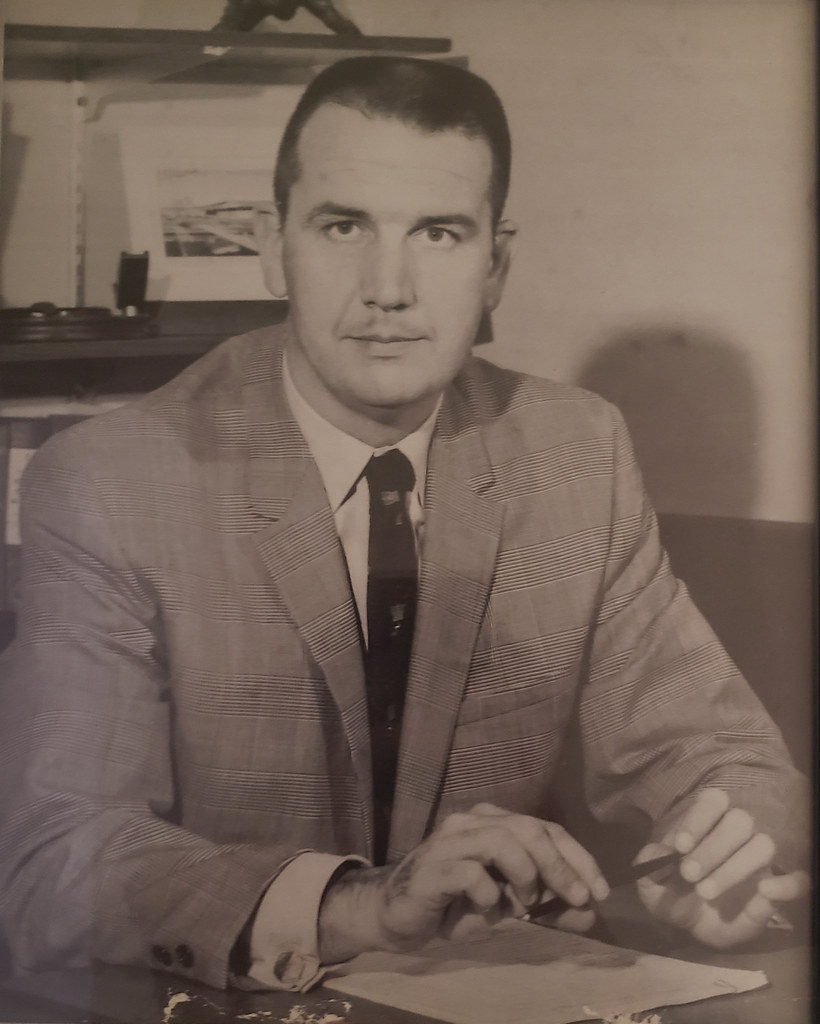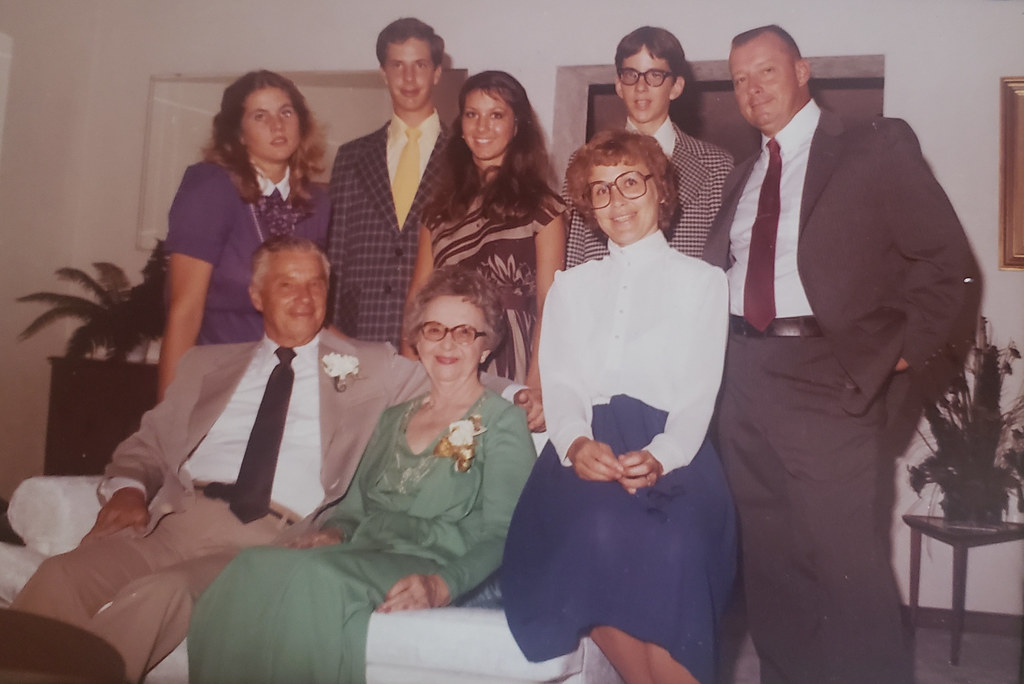The Campground
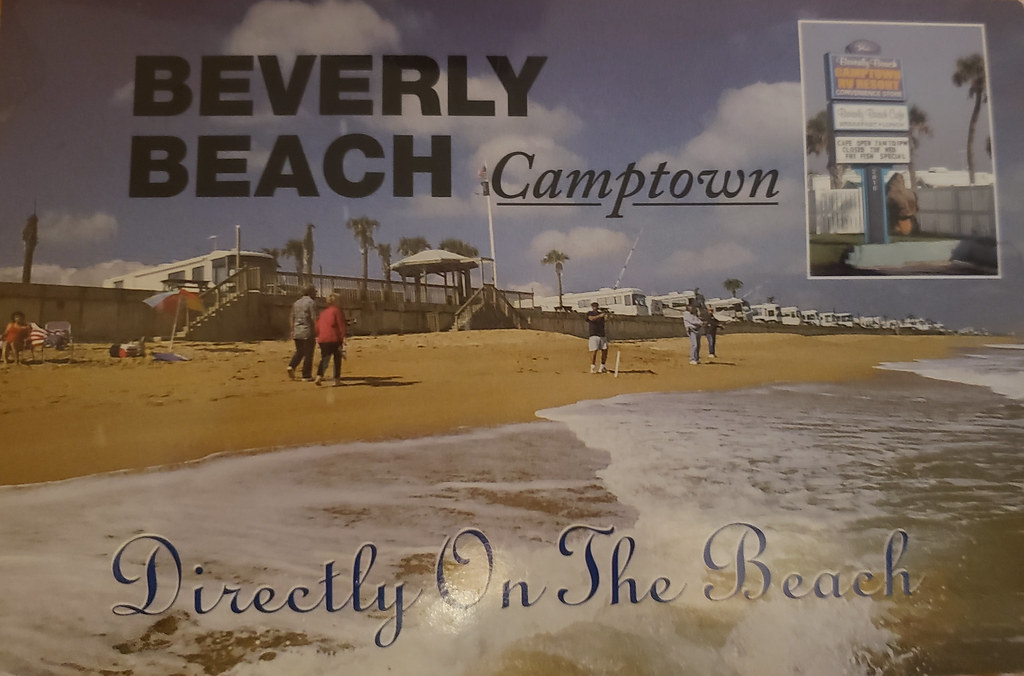
The campground around 1975, with the original seawall
Some would call the hours worked, at the ages worked, abusive. Others would not go that far, but still call it exploitative. To others, the summer visits to my grandparents would be viewed as cherished memories which taught valuable life lessons. Hard work never hurt nobody, we know the adages, all of them as old as America.
And to us, it was just normal life, the patterns and beliefs placed upon us by our summer visits to Jamestown Dr in Ormond Beach, FL, a house within walking distance of the beach, (though we may have been allowed to go swimming possibly 2 times in five weeks). And you can be sure we weren’t going to Daytona Beach (as we called it) to have fun in the arcades, ride the rides on the Boardwalk, or even go to Disney World (which we did, once , with my grandparents only paying for the A tickets, the one which let you get on the cheap rides and nothing else.)
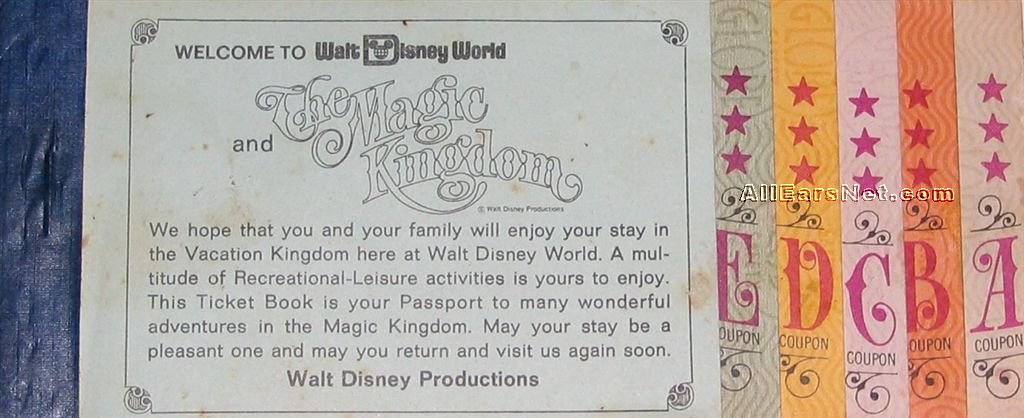
Remember?
So what did we do on our summer vacations?
We worked.
Born hard-scrabble poor, raising two children in the Great Depression, my grandparents presumed that children are to pitch in to sustain and advance the family economically, and it was presumed that we would comply, no complaint. And we didn’t, at least, never to Grammy, who ran her household with an iron fist since their marriage in 1930, and never to Grampy, a man so genial and pleasant, you felt truly sorry for letting the man down.
The one thing drilled into my siblings and I was the Protestant Work Ethic. The Ethics of Productivity and the Gospel of Thrift were continually spoken to by my grandparents, an entire litany of phrases and admonishments, most pouring from my grandmother who never, ever, took a second off in making every moment a teaching moment. Work. Earn. Save. Invest. Work. Earn. Save. Invest. Work. Earn. Save. Invest. He was the Gospel of Work, she was the Gospel of Thrift, and their philosophies combined in the collection of Horatio Alger books on the bookshelves, the Bible on the coffee table, the hardcover Readers Digest Condensed Books on their nightstands.
Our only allowed TV time was Friday night PBS news shows (Washington Week in Review, Wall Street Week with Luis Rukeyser) and the Sunday afternoon animal shows if Grammy didn’t want to watch a Mass.
My siblings and I would visit Grampy and Grammy in shifts of 2 (1 boy, 1 girl), each visit lasting about five weeks. Within a few days after school ended, Dad would drive all four of us to Tifton, Georgia, my grandparents would drive up from Daytona Beach, we’d eat lunch at the Shoney’s there right off of I-75, and then my Dad would drive back with two kids and my grandparents, too, would return home to Daytona Beach, FL, with two kids.
Five weeks later, repeat: Drive to Tifton for both parties, lunch at Shoney’s, this time swapping kids – the first set returns home, the second set goes to the grandparents for five weeks. And, yes, there was a third trip to Tifton at the end of the summer to pick up the second set of kids and return them in time for school. One year I would go with Beth, the next with Becky, and so on until we started aging out by having summer jobs.
My first trip to visit my mother’s parents was at the age of four – it was my first plane trip, it was the last day I was 3 years old, I flew alone and sat with an elderly woman who was asked to watch over me, and my grandparents met me at the bottom of the stairs.
Fuckin’ 70s were awesome, weren’t they? You could literally fly a 3-year-old across country, dumping responsibility for him onto some random elderly passenger who paid 1970s ticket prices to become a babysitter for an ADHD++ brat, and still reasonably expect the kid to arrive safely.
I turned 4 while staying there, which was likely the idea – my grandparents celebrating my birthday with me in person. And even on that trip I helped my grandmother by pulling weeds, holding the dust pan, and wiping surfaces in the number of rental homes which she and Grampy owned – at their peak, they owned around 13-15 homes before selling them off for investment reasons.
As I mentioned above, in the early 1970s, my uncle started a (or bought a struggling) combination mobile home park/campground in Beverly Beach, FL. 1,500 feet of oceanfront shoreline, the property crosses A1A and ends at Halifax River, it’s a prime piece of real estate 30 minutes north of Daytona Beach. Part of the agreement he made with the City of Beverly Beach was to build and maintain a water/sewage treatment facility for the entire city of 700, which he did. In effect, with over 260 mobile homes, the sewage and water treatment plants, and the largest meeting space in the city, our mobile home park became the City of Beverly Beach.
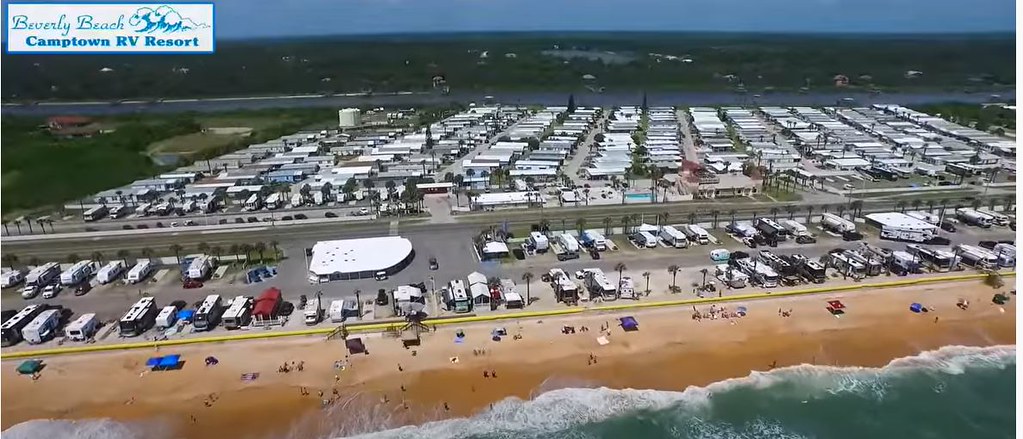
Yeah, my family effectively owned a city. We didn’t start out with that as our intention, but that’s what happened.
The minute the campground was purchased, I never worked in one of the houses again, except for emergencies. My summers were dedicated to working at the campground/mobile home park, Monday through Friday, 4, sometimes 5 days a week, 7-10 hours a day, all five weeks.
Mowing. Digging. Weeding. Painting. Hammering. Public bathroom cleaning. Stocking shelves (we had a small store). Hauling. Carrying. Picking Up of Stuff. Cleaning. Anything which needed to be done, we did under the direction of my grandfather, who frankly found a second life with the campground. My grandfather, my brother, and I built a fence which stretched from A1A to about 10 feet from the Halifax, about 1,000 feet. I was as old as you are when you go to the third grade… I remember my childhood by which grade I was in, not how old I was, so deal. I was third-grade years old when me and two others, including a fifth-grader, built a fence. And that thing survived the nor’easter and Bruce’s first seawall did not, so nah. 
… and take a guess who had the job of cleaning out the cattails which would constantly grow and block some drains? My strong constitution was probably foreshadowed by all those times I waded into the grey-water runoff of the people of the City of Beverly Beach and never once got sick.
At 10 years of age, I was almost certainly the most experienced American installer of coaxial cable in my age group. In early 1977 the decision was made to pre-wire every new mobile home with the latest technology, a coaxial cable for cable television, and to wire every existent mobile home so they can subscribe to cable as well. The equipment came in early June, and with over 60 lots sold and installed, and more coming in weekly, it was quickly found that the very thin 10-year-old was the perfect size to slide underneath a mobile home (about 1.5 feet of space between the ground and the bottom of the trailer) with a wire and a drill. I would crawl under the home, wiggle and scooch to where the TV was being installed, my grandfather tapping on the right location, drill a hole up into the frame of the home between the outer wall and the inner wall, and then feed the coaxial cable up, where my grandfather was waiting with a drill, a hole, and a wall plate of his own. I would often have to do both parts myself which was a pain in the ass given I hated attaching the connector to the wire (saving some money, the wires were separate from the connectors. Sometimes, being Scottish means you make stupidly cheap decisions.)
My rate of pay was $.25/hour. And it ALL went into my savings account.
In February 1979, a nor’easter blew through Flagler County and, with water getting behind the wall, the seawall, or at least a portion of it, collapsed. Badly designed, it was just slabs of concrete sticking up in the sand, held together by whatever held concrete together, and the moment water started eroding all the sand supporting the back of the wall, it was over. Pictured above, you can see it’s just pillars of concrete, stacked side-by-side.
And it wasn’t just a small wall – at the time, we were able to nationally advertise the campground as “The largest privately-owned seawall on the East Coast!”, it being just over 1,500 feet (460 meters) in length.
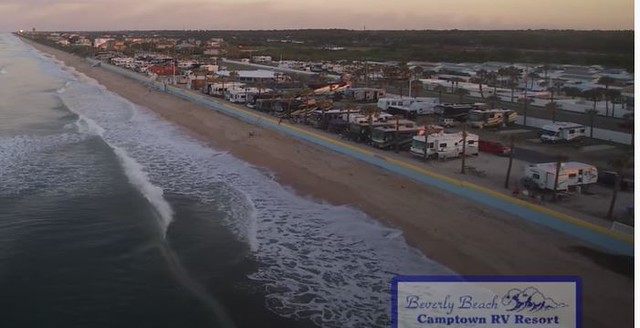
That thing was long
The campground was closed for damage assessment, then re-opened, but only the non-seaside side. Investigations were made, nothing came of it, debris was removed, and it was time to build a new seawall. And, btw, I’m assuming they got their permits, because all this was done by my uncle and grandfather who had, shall we say, a rather dismissive approach to regulation, aka, Communism.
My uncle fancied himself an engineer and designed his own seawall: three blocks of concrete per section, the first being a triangle-shaped breaker which would help remove energy from any waves approaching the wall, the wall itself, and then a large concrete anchor attached to the wall via galvanized rods:

And, guess what? Everything was ready to start on the rebuild just as school let out . And this time, my grandparents requested – just send us the boys. For the whole summer. And, again, my Dad eagerly complied. Getting rid of the two youngest children, the boys ? 2 years after the divorce? Hell to the fuck yeah!
The breakers couldn’t be poured on site, they had to be done in Jacksonville and then hauled down, 2-4 at a time, and then placed along the beach according to the design. It was a pain in the ass to do this without collapsing the oceanside, but it wasn’t my pain in the ass.
Hammering. Hammering was my pain in the ass, at least at first.
Hammering was the first 3 weeks of the summer of 1979, an endless chorus of “bom-bom-Bom-BOMP! bom-bom-Bom-BOMP! bom-bom-Bom-BOMP!”, for I had the four-knock hammering stroke down flat by this time (I may have been one of the best in my age range at hammering as well, a skill I have definitely lost), as we built the frames for the concrete pours for both the wall and anchor sections.
My grandfather had his 25-foot measuring tape, chalk string (he loved snapping his chalk string and I think he used it more than needed, lol), and pencil, using it to measure points where my brother was then to drill holes for the galvanized rods. And for three weeks, more, we built enough frames to cover the above design for 1,500+ feet of seawall, for the family was not going to lose that designation!
Then the insanity began.
First, the annual noseeum invasion occurred, and this one was bad . Imagine being bitten by invisible bugs at random points to your body every few minutes. That’s pretty much my existence for 2 weeks, as we began to build the actual wall.
The breakers in place, the goal was to place the wall frame in, put the galvanized rods in place, pour the concrete, then put the anchor in place, pour it , and be done.
Nope. On the very first one, we realized the rods were so long that the only way this was to get done was to do the reverse: Dig the holes, place the anchor frame in its hole, insert the rods sliding them to the very back of the anchor frame(1), place the wall frame in place, slide the galvanized rods forward into the wall frame(2), then pour concrete into both frames, one after another, ensuring the rods don’t slide out of the wall frame(3) during the pour.
Take a guess who was responsible for the above-numbered tasks? For every pour? While standing in the hole in the above chart where it says “Rods”?
The crew was my uncle, who was always on the backhoe/bulldozer, my grandfather, my uncle’s assistant, a guy named Andy (who wasn’t worth ‘the spit it took to shine your shoes’ according to my grandfather), my brother, myself, and whatever randos happened to find themselves needing $25 and were willing to work ‘8 square plus lunch’ for it. And they were there, every day, especially once word got out.
The seawall sections were 10 feet each. We had ~150 sections in which to place by mid-August, when I and my brother would have to return home, to school. My job was to descend into the pit , guide the anchor into place, insert the galvanized beams, sliding them to the back, guide the wall frame into place, pull the beams forward into the wall frame, centering them properly, and then… while still in the hole … had to wait while the concrete was being poured 4 feet above my head and 6 inches in the side, my grandfather and the rando holding the chute. If the rods started sliding because of the vibration, I was to shove them back in. When done, I climbed out of the pit, my brother got into the next one, and randos 2 & 3 started filling in the rod pit with sand, close to the top of the frames.
150+ times, 75 each, my brother and I did this over 5 weeks. Noseeums biting, the heat and humidity so bad that at times I would see everything encased in a purple haze, the discipline it took to stay in the pit to get the job done is well beyond what I would do today, to be honest. In time, the noseeums were blown away, the ocean breeze returned, and we fell into a rhythm of 4-6 wall segments a day. We stopped going to church, working 7 days a week. After two weeks of that , my grandmother put her foot down, declaring this Ungodly state of affairs absolutely unacceptable – so a compromise was reached: We started going to the 8am mass so my brother and I could be at the campground at 10am, instead of the 8am we usually arrived at.
We have to honor the Lord on His day, but nothing says we have to give Him a day of rest. And what was more holy than productivity and hard work, anyway?
(I heard Grammy’s voice as I typed the above.)
By the first week of August, we were done. Andy was long gone by then, but we had a couple of regulars among the hired hand set, so we didn’t miss a beat. Within a few days of the last wall segment placed, we loaded up in the car and made the trip to Tifton.
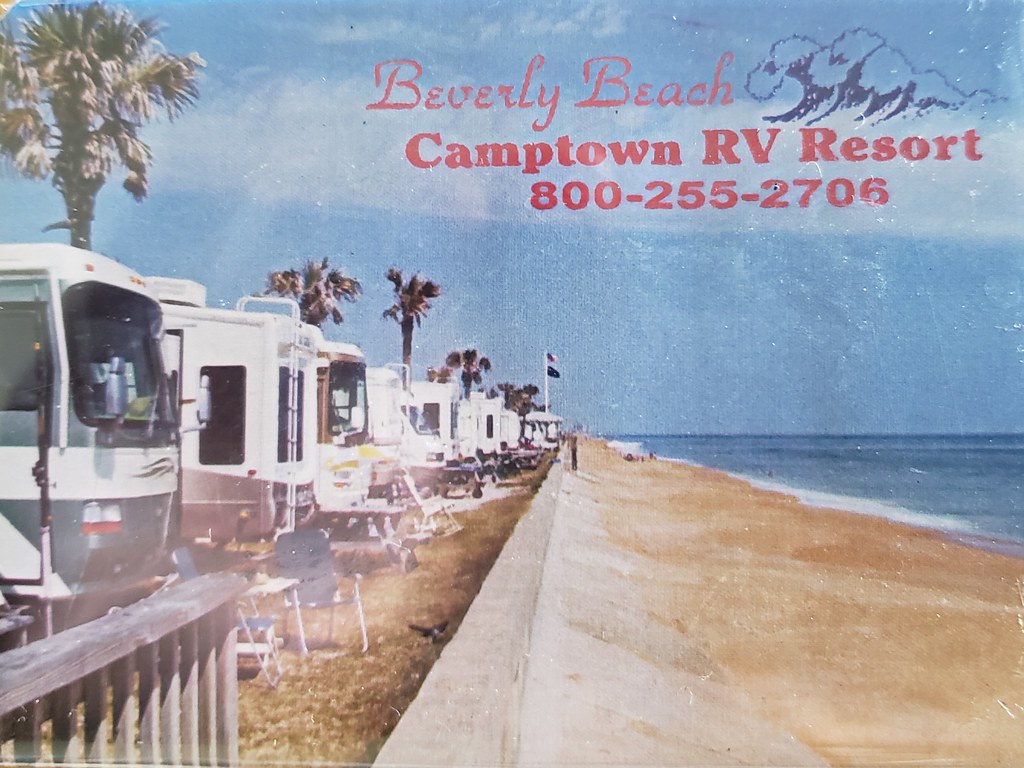
The wall, 1995. The sand was already beginning to drift significantly up the breakers.
For what was the very last time, it came to be. The next year, aged 13, I decided the last thing I wanted to do was go back to the campground, so I followed in the path of my brothers and sisters and got an hourly job via the simple means of forging my work certificate. The summer trips to my grandparents thus ending, never to return.
Within months the decision was made to sell the campground – it may have even been in work while the seawall was being repaired. My grandparents entering their 70s, my uncle thinking of other things he would like to do with his life, the third investor in poor health and wanting to cash out, the expense and worry of the seawall replacement… if there was a time to sell, this would be it.
It was sold, $6,000,000 all told, self-financed by my grandparents and uncle, terms of the deal were prime + 4%. And in the same sort of timing luck which had my grandparents start investing in the stock market at the bottom of the Great Depression, only to die at the top of the internet stock market boom, within a year of the park being sold, Paul Volcker, chairman of the Federal Reserve, allowed the prime rate to climb as high as 21.5% by election day, 1980, $1,500,000 in annual interest payments on a $6 million loan! Obviously, the investor group could not afford this, and nobody on our side wanted the campground back, so they reworked the loan so the investors paid a flat 15%, which still sounds incredibly rich today. My grandparents owned a third, so their share of the interest started at $300,000/year, and I think the group finally paid off the note in 1987 or so. All told, my back of the envelope calculations had my grandparents grossing about $3 million on the sale.
So, my uncle got $3 million, my grandparents got $3 million, and the third investor… his estate got $3 million.
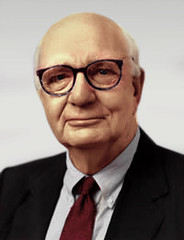
Paul Volcker, our hero…
The impact of all this, the years of the Gospel of Wealth and Hard Work, coupled with the living example for 5-10 weeks we each had every year for close to a decade, was profound on my siblings and I, so much so that the values we measure ourselves by, all of us, come from our grandparents, not our father. For me, no job in the future was ever as hard as working on that seawall, at least not until the peak MDS years of the 2000s. No job was so dangerous. No job was so intense. No job was, at the time, so hated.
No job since was so rewarding.
